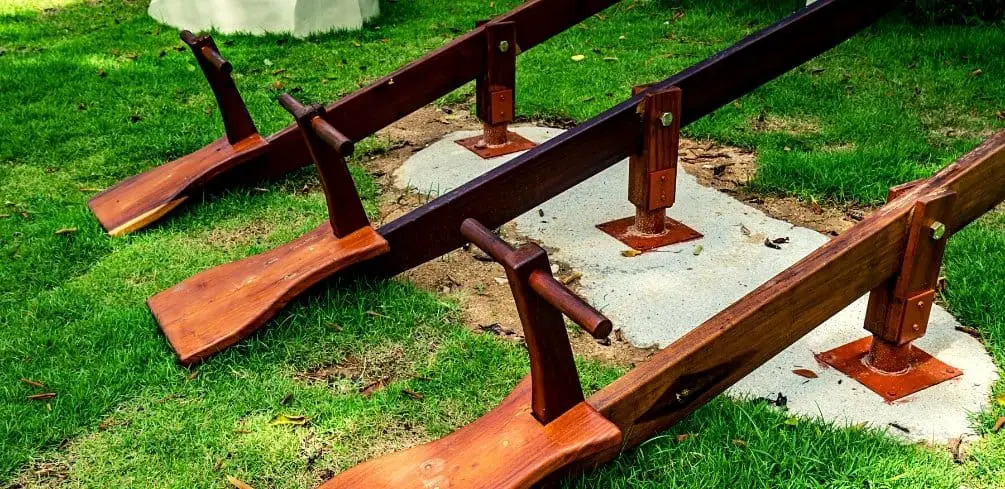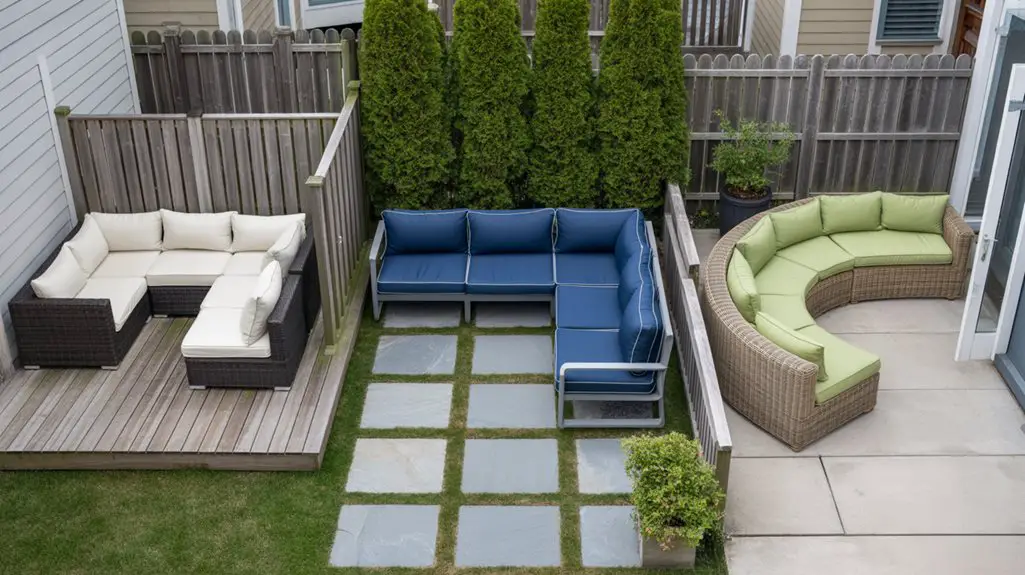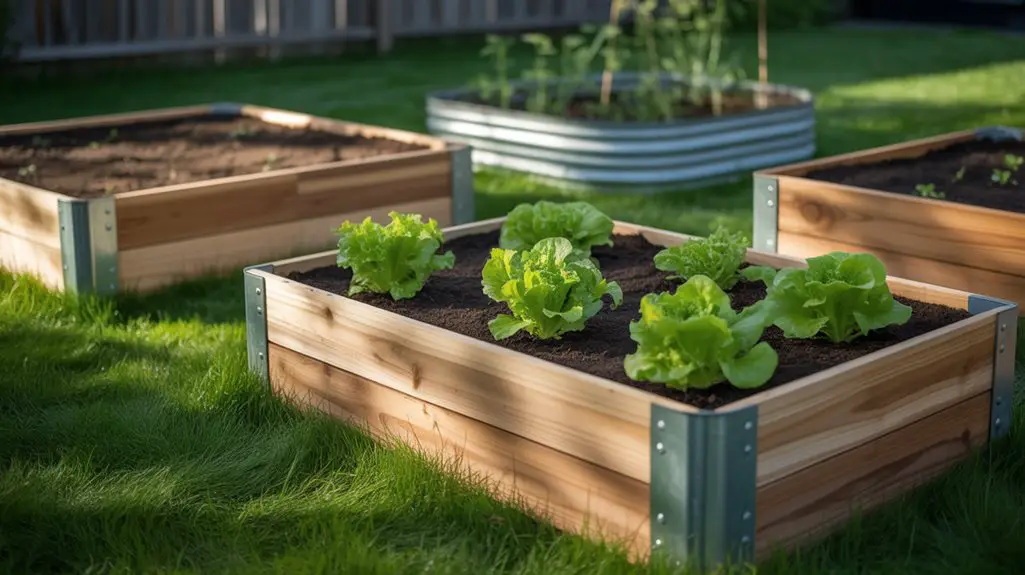When designing a wooden teeter-totter, you need to ensure that actions that take place on one side of the totter directly impact the other side. Making a teeter-totter seesaw will have one side touching the ground while the other side will be twice as much as the pivot at the middle.
You have to ensure that the upper side is not dangerously above the ground or too low to overlay the earthboard. It is more thrilling when the feet are not touching the ground.
However, it would be best to have an open setting and landscaped before building the whole setup.
There are several ways you can make the DIY seesaw project done. Therefore, this article features several types of seesaws and how to make DIY seesaws.
We have adequate information on plans to give you all that is required and ensure a hassle-free building process. So let’s begin by getting to know the various types of seesaws.
Types of Seesaws
– Dual Rocker Seesaw
The dual rocker consists of two seats that offer a lot of excitement to the kids. Its versatile design makes it usable either indoors or outdoors.
Additionally, it accommodates a wide range of children between the age of 2 to 6 years being among the main users.
There are more choices to choose from under dual rocker seesaw designs:
- Molded plastic or single-piece pairing with two seats: this design does not have a central pivot but performs on the curvature design of its base when children are riding it.
- A convection multi-piece seesaw is available in a two-seat design resting on a wooden or steel bar. The structure consists of a central pivot as the resting point.
- Glider seesaw suspended from ceiling hook or tree branch- it is much different for it is hung from both ends by strong cables or ropes.
– Four Seat Seesaw
It comes with an intersection of two steel or wooden planks that rest on a central pivot. The seats are located at the edges and accommodate up to four participants.
– Swirling Fun Seesaw
The improvised seesaw is available in bouncing up and down design. Its name comes from a unique feature that consists of swirling 360 degrees.
However, the design comes in two seats mounted at the edge of a wooden plank or steel tube.
The equipment is ideal for kids aged three years and below. Therefore, a neighborhood of kindergarten kids or pre-school children can enjoy the equipment together.
– Single-seat Rocker
The seesaw is designed for toddlers who are learning to take their first steps. Its curved base facilitates the swing as the seat is located at the center.
The market offers the single-seat rocker in various designs and colors.
– Seesaw with Planks
The design consists of two planks facing each other, whereby two to five children can rock.
How to Set Up a DIY Wooden Seesaw
Setting up a seesaw should feature safety measures, especially when building it for younger kids. The shock-absorbing substrate handles with rubber grips and cushioned seats are easy safety measures you can take when designing.
When purchasing materials like lumber, ensure you keenly select planks that are straight with no flaws. It is crucial to consider selecting hardwood like cedar, pine, or any other weather-resistant lumber for long-term benefits.
To get the job started, confirm that all the materials and tools needed in the project are available. Here is a checklist of materials, tools, and duration required to complete the process.
Materials to Build a Seesaw
- Two pieces of 4X4 lumber (35.5 long, two pieces of 2X4 lumber, and 34.5 long) for the base set.
- Two pieces of 4X4 lumber (20″ Long) for Support
- One part of 2X8 lumber (96″ Long) for the Plank
- Two pieces of 2X4 lumber (8.5″ Long, two fragments of ¾” dowels, and 7.5″ long) for handles.
- Two pieces of 4X4 lumber (6″)
- One piece of 2X8 lumber (8″)
- One piece of 2X4 lumber (8″)
- 2 ½”, one ¼,” 5 ½” screws
- Pipe strap clamps, ¾” threaded rod, washers, nuts, and a rod
- ¾” Dowel
- Glue or stain
- Filler
Tools required to Build a Seesaw
- Hammer, Miter Saw, Spirit Level, Jigsaw
- Speed Square/ Framing Square
- Sander, Screwdriver
- Safety gloves, Safety glasses
- Drill, Drill Bit set
- Carpentry pencil, Tape measure, Chalk line
Set up Duration
Ranges between ½ a day to one day.
DIY Seesaw Plans
Homemade seesaw is an easy project that can utilize empty spaces into a perfect playing ground for children. The equipment is also referred to as teeter-totter, and it generally requires open areas to set up.
But before setting it up, you have to clear any abstractions like bushes or long grass behind the yard. So here are five simple steps on how to DIY a seesaw.
Step 1: Build a Base
Building the base for the seesaw should come first in the process. You will use 4X4 lumber components that act as the vertical posts of the seesaw. Having placed horizontal beams at the bottom, drill holes through the beams and insert 5 ½” screws.
That makes the vertical post firm. Use the spirit level to check and ensure that the horizontal beams are plumb.
Remember to select perfect square beams which offer proper base support.
The adjustment that you make on vertical beams will highly depend on who uses the seesaw. But it is okay if you choose between 4-6″ extended support. Add waterproof glue to seal off the joints.
Step 2: Attach Supports to the Base
Step 2 consists of attaching 2X4 supports to the horizontal base of the seesaw. Ensure that the slats are strategically centered to the bottom.
Then lock them with 2 ½” screws right after drilling pilot holes. Use your tape measure to accurately measure and make identical holes on both supports.
You have to drill ¾” pilot holes through the vertical supports.
Step 3: Fit the Pipe Strap Clamps.
Next is fitting a pipe strap clamps at the back of the pivoting beam. However, you have to insert a 3″ threaded rod through the side supports.
Note that both support sides of the threaded rod should overhang at least 1 ½” inches.
Now, you can fit the washers and nuts. Cut a ¾” of the threaded rod at 18 ½”.
Step 4: Build a Handle Base.
The handle base should be located on both sides of the 2X4 lumber. You will then add ¾” dowels right after drilling the pilot holes.
Use 2 ½” screws to lock the handles to the plank. You will insert the screws through the bottom of the plank or use L-brackets.
Use filler and glue to close the gaps.
Step 5: Smoothen the surface.
Next in the process is smoothening the edges and surface with 120-220 grit sandpaper. The strategy comes right after you are done filling the dents and holes with wood putty.
After the surface is perfectly smooth, begin applying a few paints or stains to enhance the appearance and protect the wood from solid weather elements.
When you are done, the seesaw is ready for use. However, you need to pay some supervision as the kids might not be too familiar with how it works.
You can also offer guidance to avoid injuries as kids enjoy their moment on a new seesaw. More on this below.
Physical and Mental Benefits of Seesaws
Children do love seesaws, and installing one in your home’s backyard creates lots of excitement for your children. But what are the physical and mental benefits of seesaws?
Physical and mental balance is the essential benefit kids benefit from as they play things. Some of the abilities that they develop include:
- High concentration power
- Assertive, firm, and balanced strides
- Better abilities in sports, especially brisk walking or rope walking
- Enhances reflexes
Key Safety Features of Seesaws
Playground injuries are prone to young children. But there are ways to mitigate serious injuries when using seesaws.
After installing the seesaw in the backyard, you should:
- Keep an eye on the kids when using the seesaw. Seating on a single seat can be too dangerous.
- Teach children how to balance on both sides of a seesaw.
- Inspect the equipment periodically. You will get to tighten the loose parts and replace screws where they have undergone wear and tear.
- Teach them to never get off the teeter-totters abruptly without it resting on the ground.
- Teach them to avoid standing up when the session continues.
- Teach them how to grip firmly on the handle while in session.
- Teach them to have collaboration play when in session rather than applying more strength to win a session. It should not be a competition.
Conclusion
Teeter totter equipment should always meet safety and operational standards. Therefore, you have to ensure you followed the procedures accurately without messing up with the measurements.
However, how you design it depends on age and how huge is your outdoor space.
Reckless handling of the seesaw can cause injuries, and it is vital to keep monitoring kids when using the equipment. Keep regular check up on its functionality to discover the weakness earlier before causing more damages.
We have full guides on how to create a full DIY playground for you to check out next!
Please be careful and use at your own risk
None of the authors, contributors, administrators, or anyone else connected with BestPlaygroundSets, in any way whatsoever, can be responsible for your use of the information contained in or linked from these web pages.




